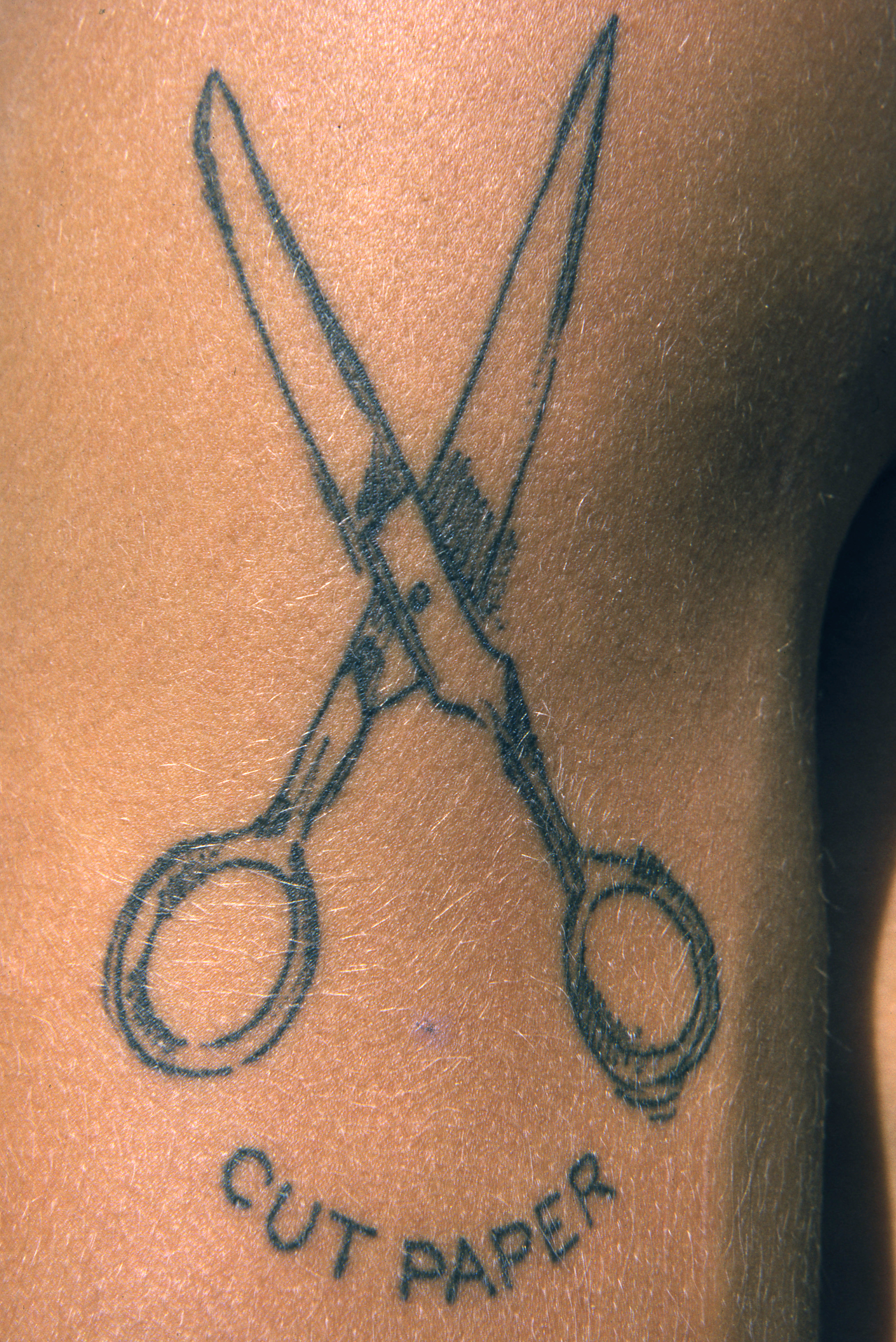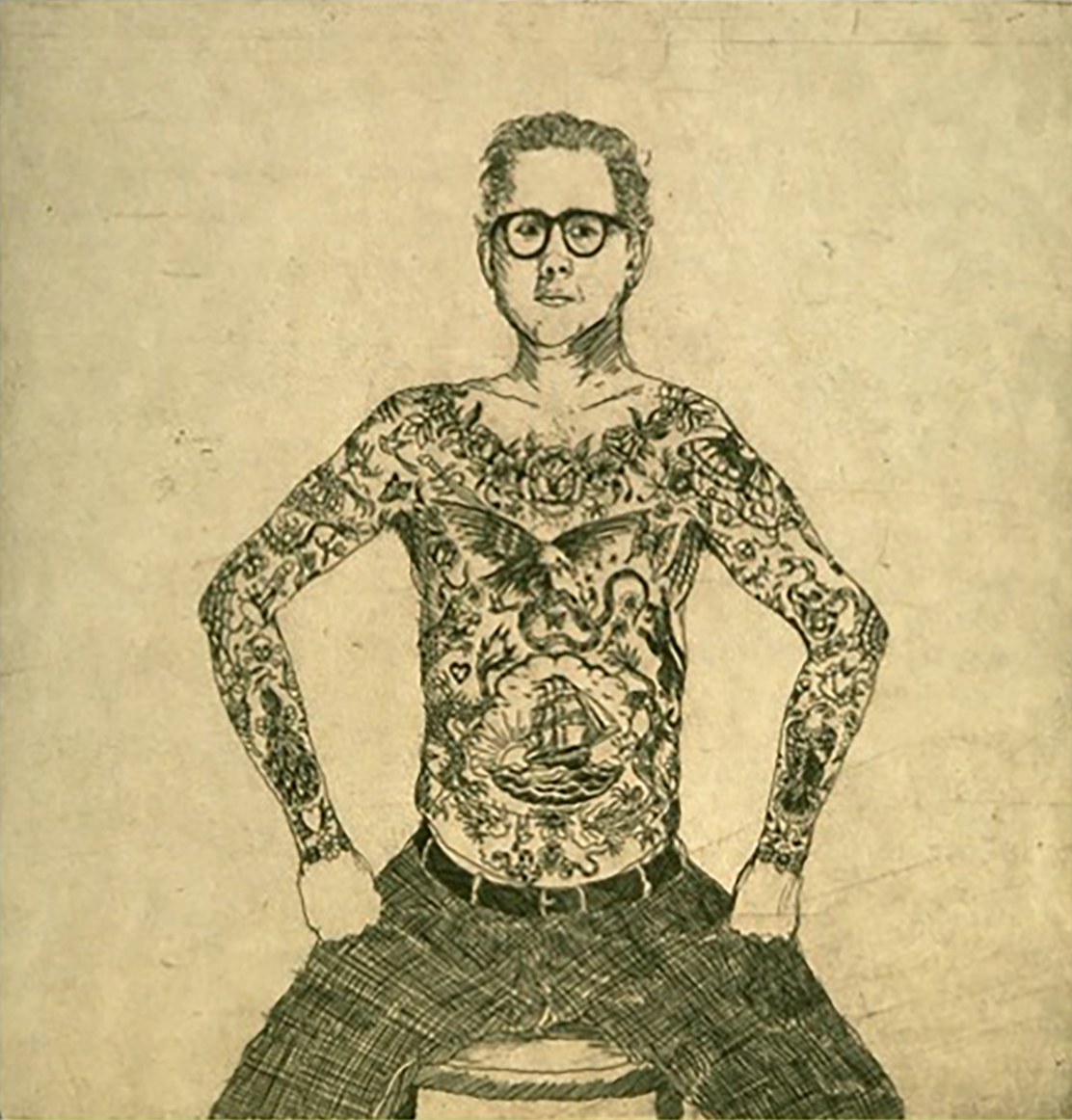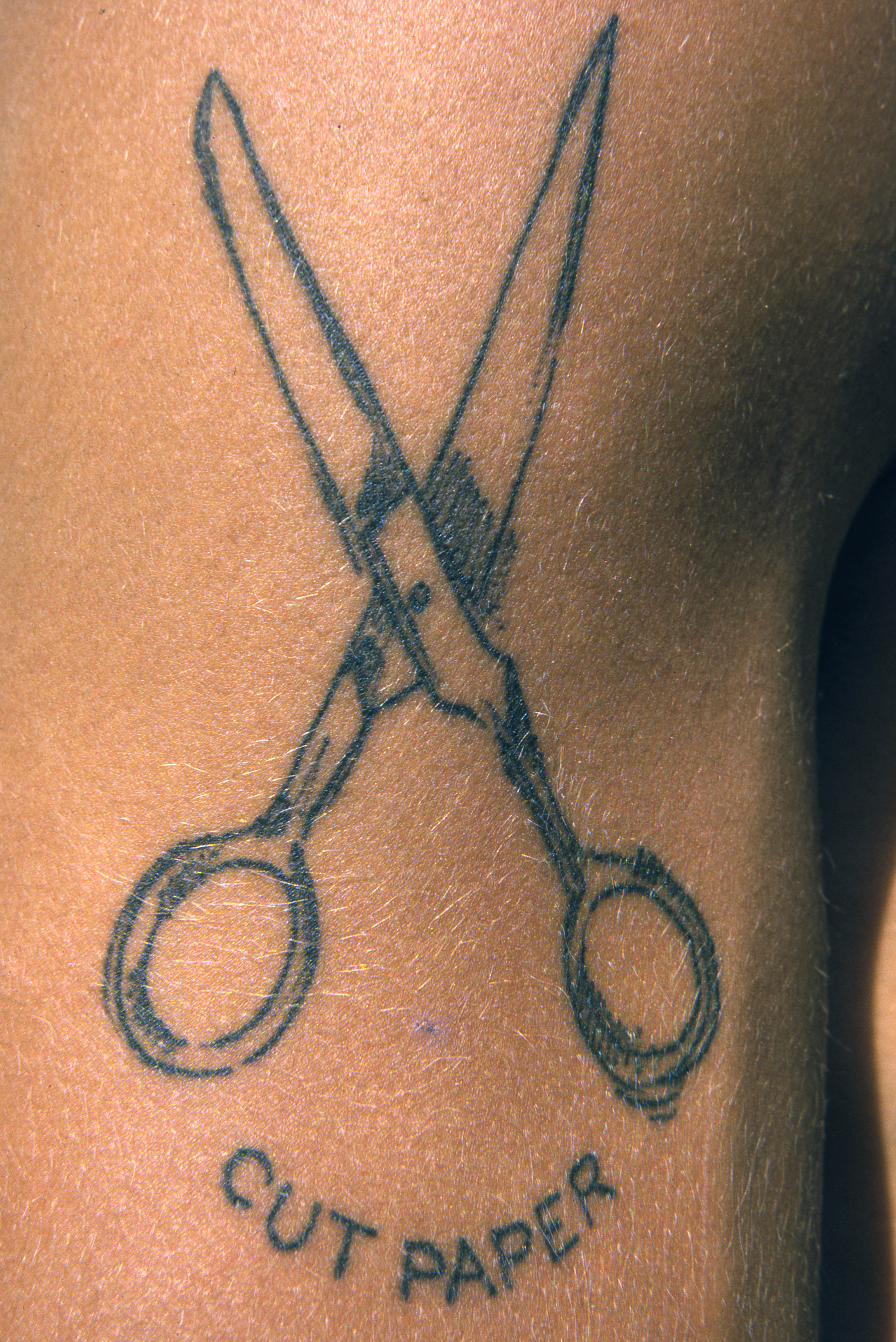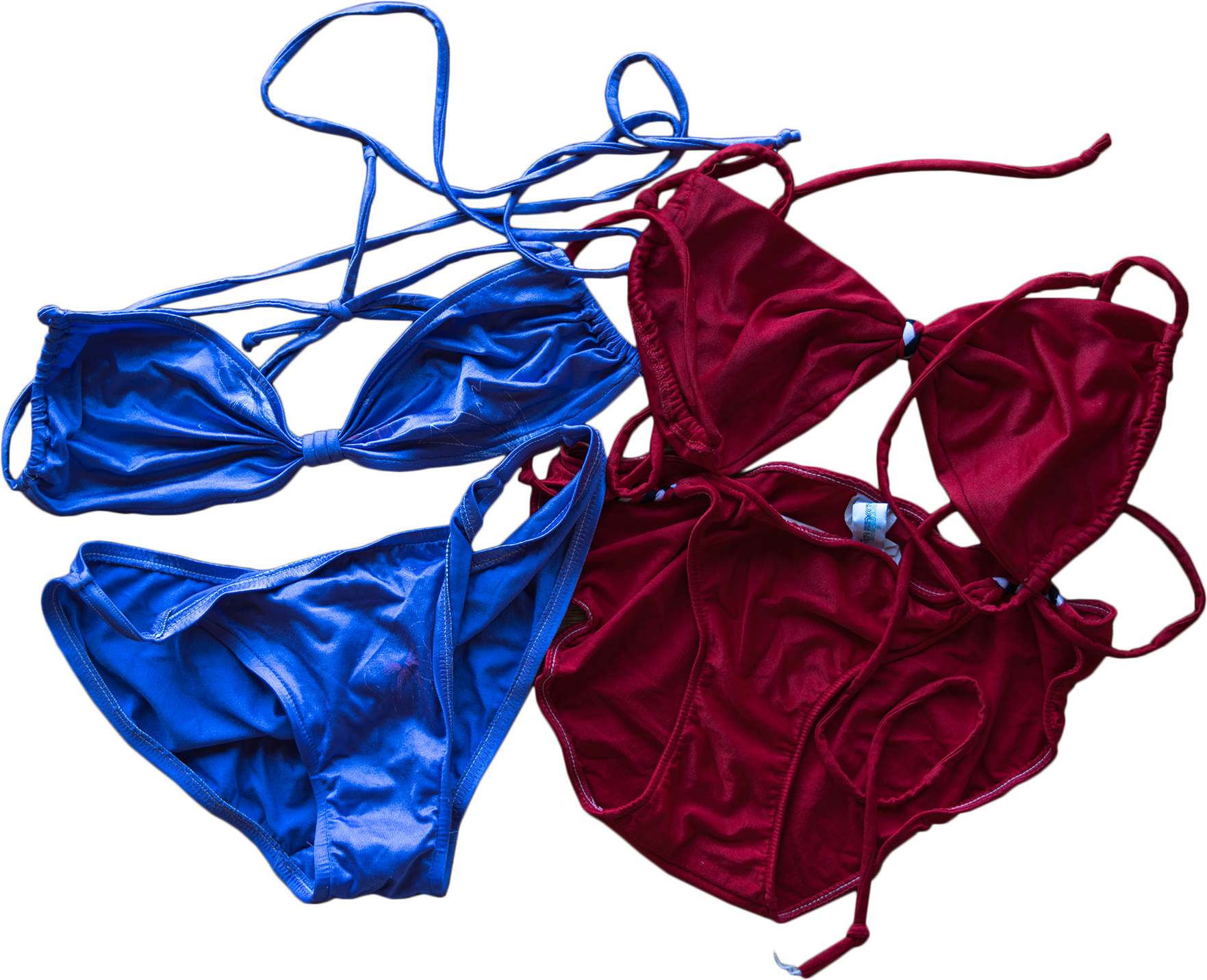
Scissors Tattoo
Author
Jeff Gunderson
Decade
1920s 1950s 1960s 1970s 1980s 1990s 2010s
Tags
Ritual Printmaking
Tattoos
Tattoos have probably been in the mix at SFAI since the 1870s, when the first sailor wandered off a ship and stumbled into 313 Pine Street (the school’s original location) with the classic sailor tattoo “He who is fated to be hanged will not drown.”
JG












